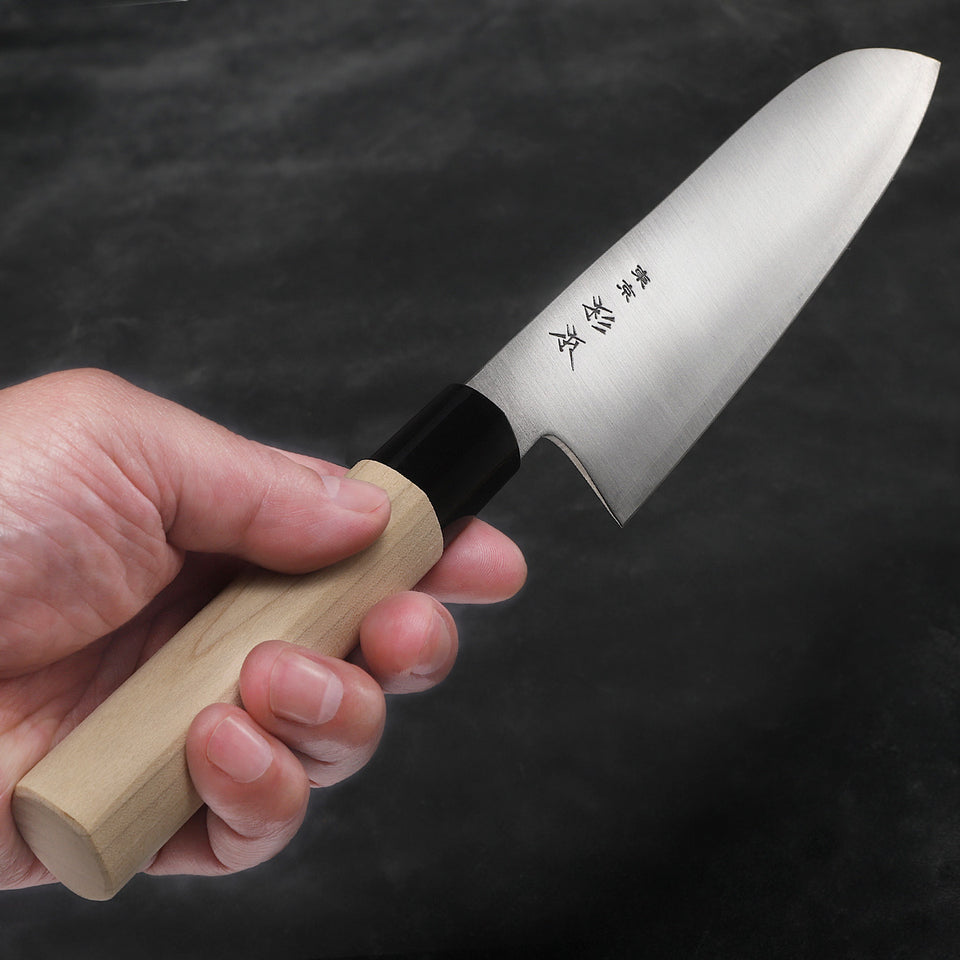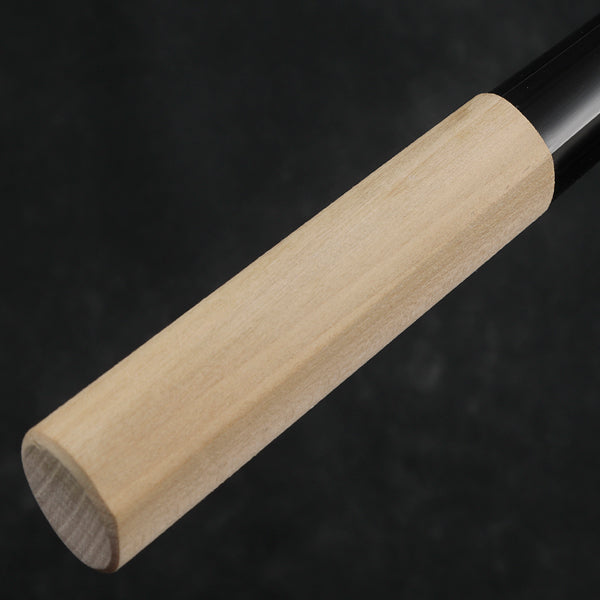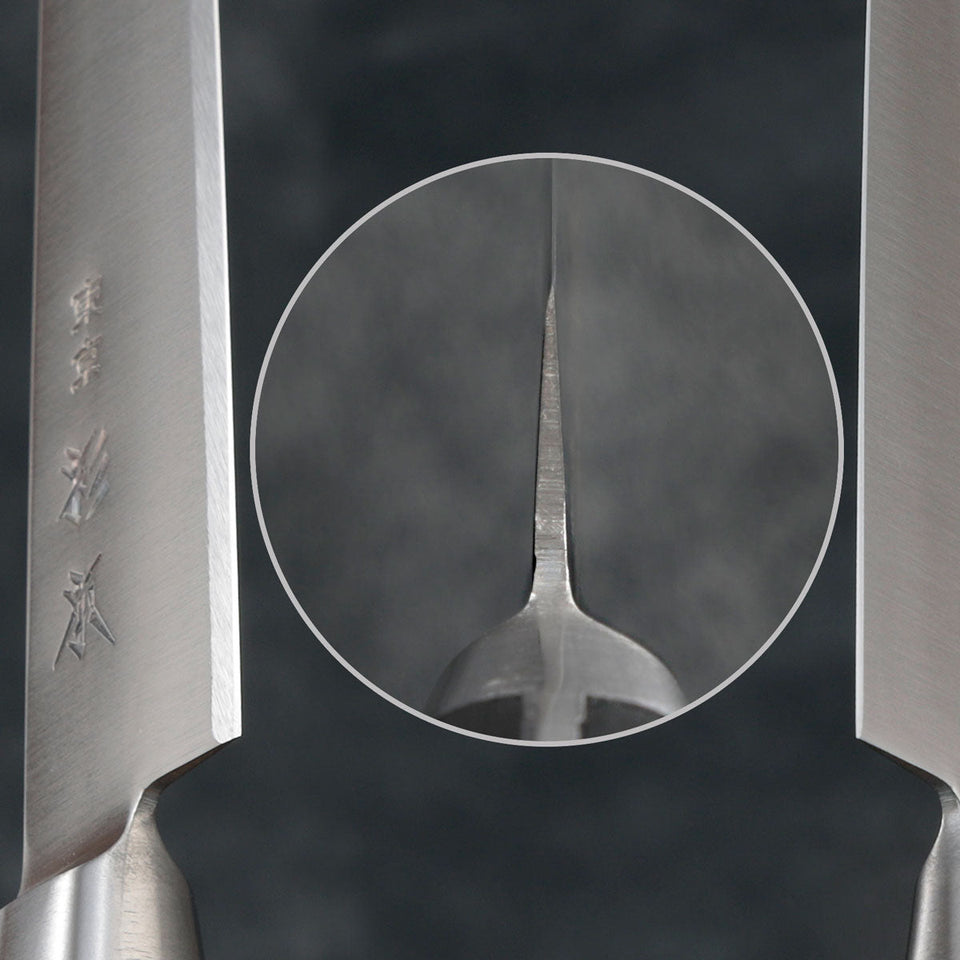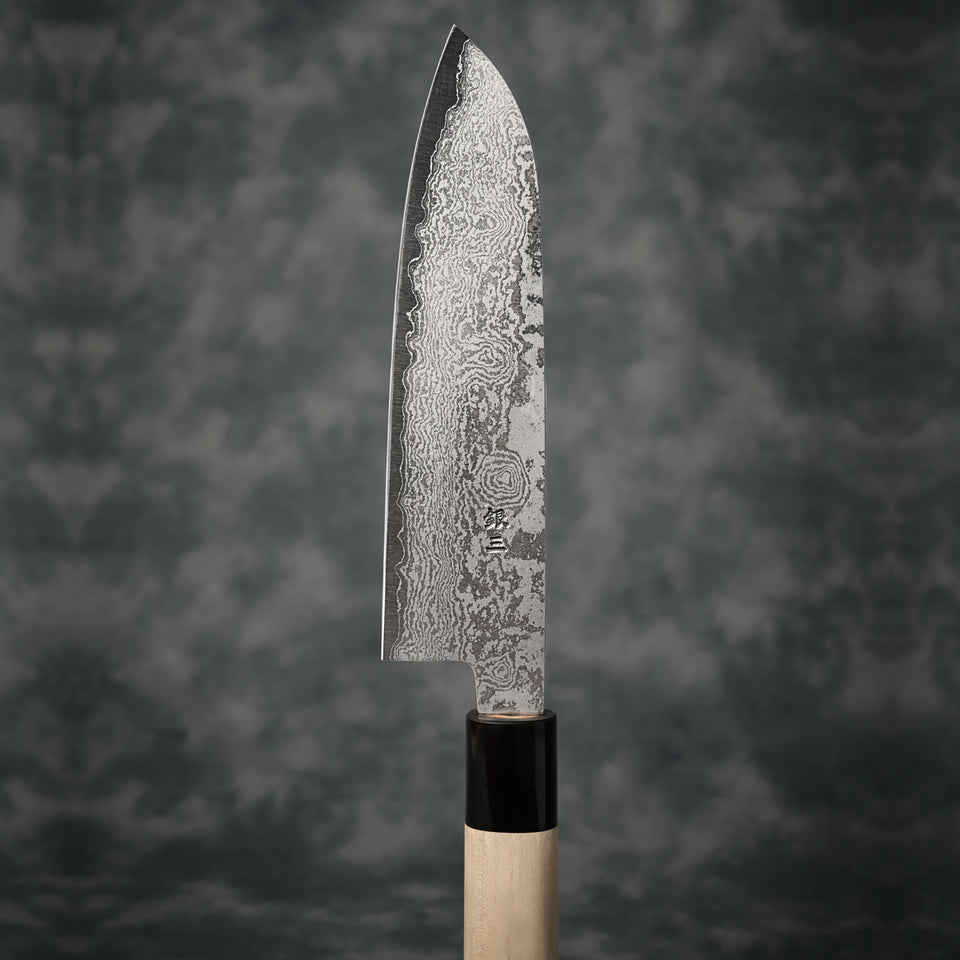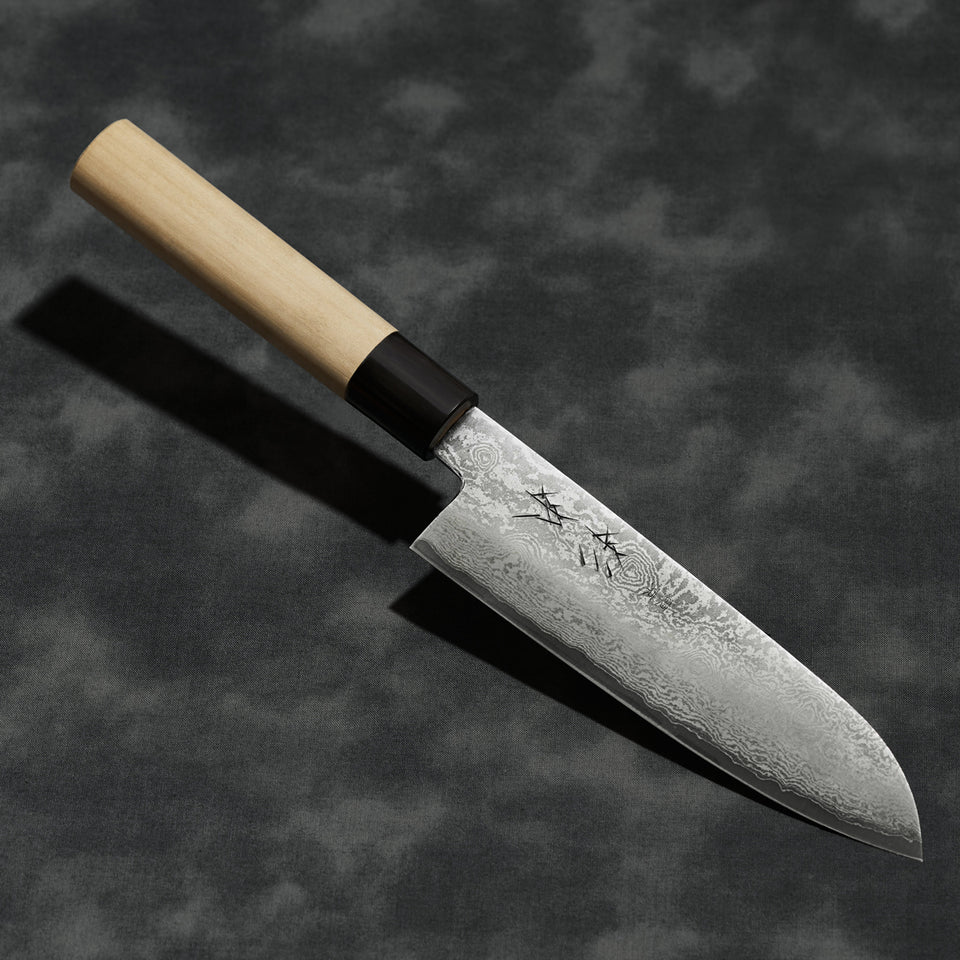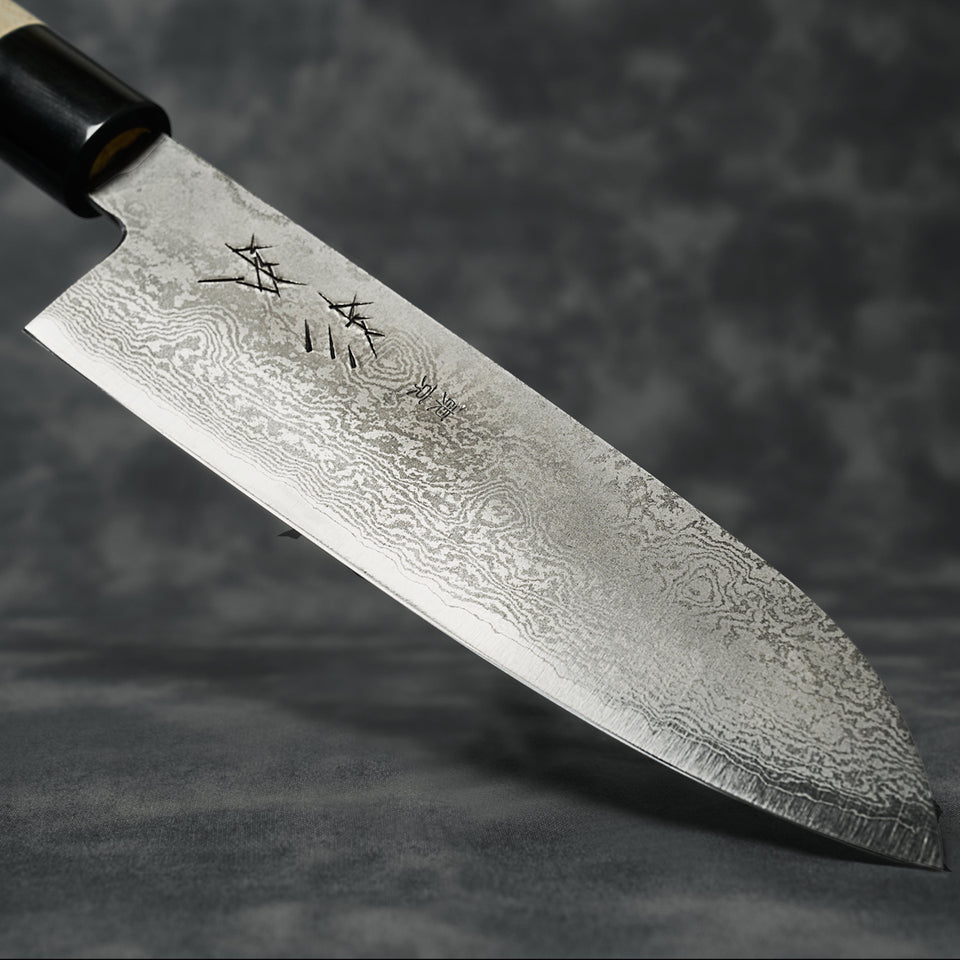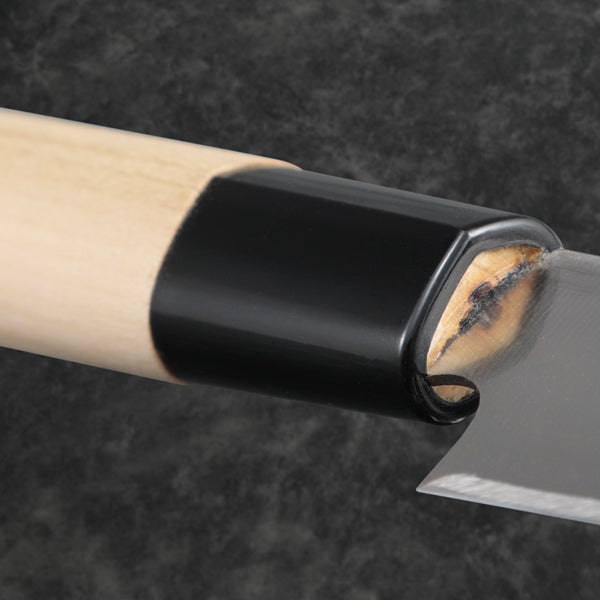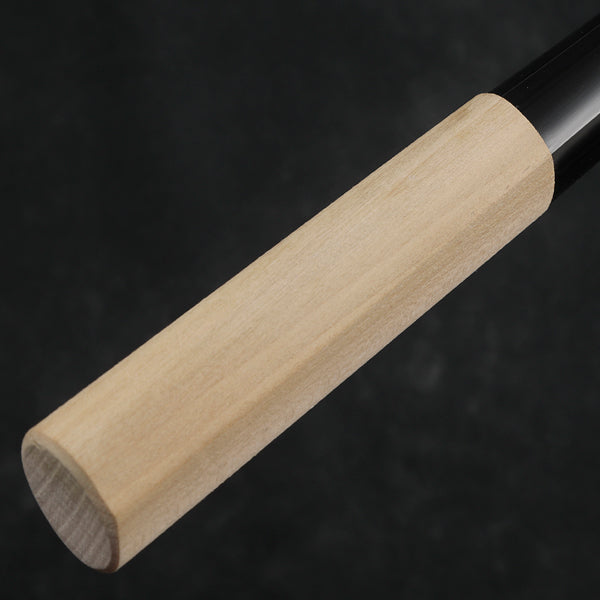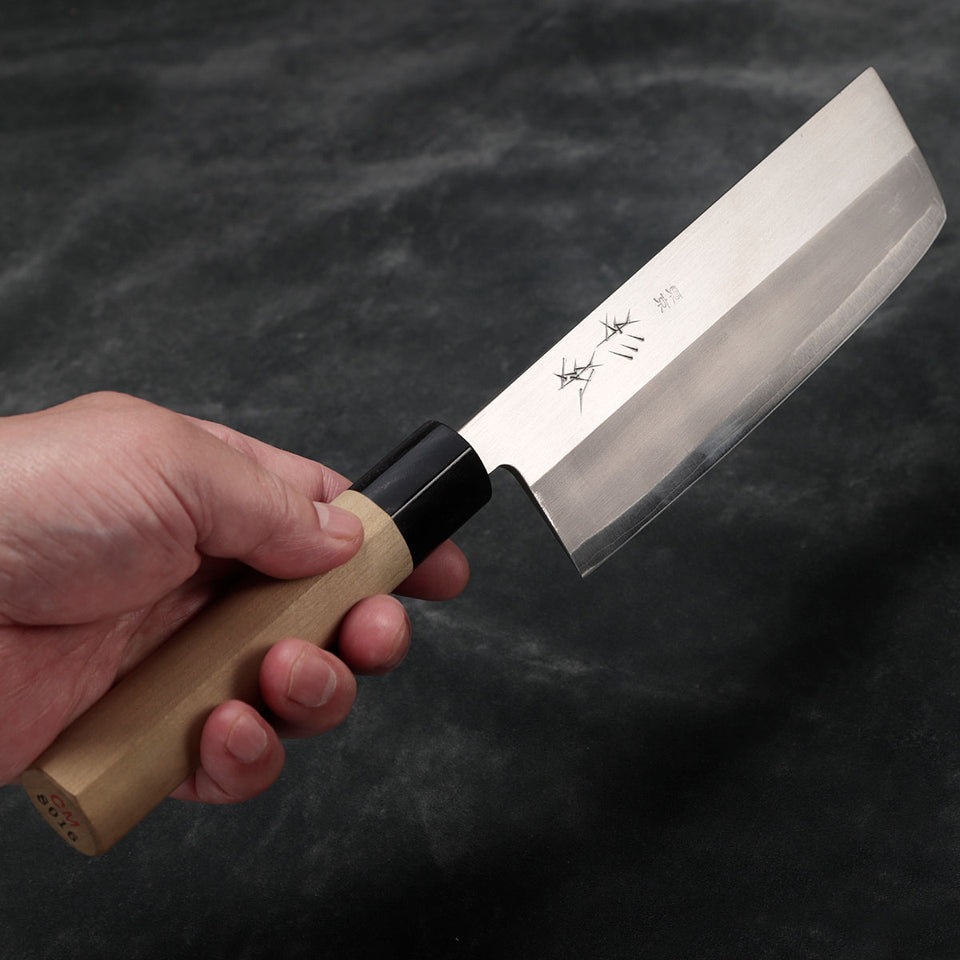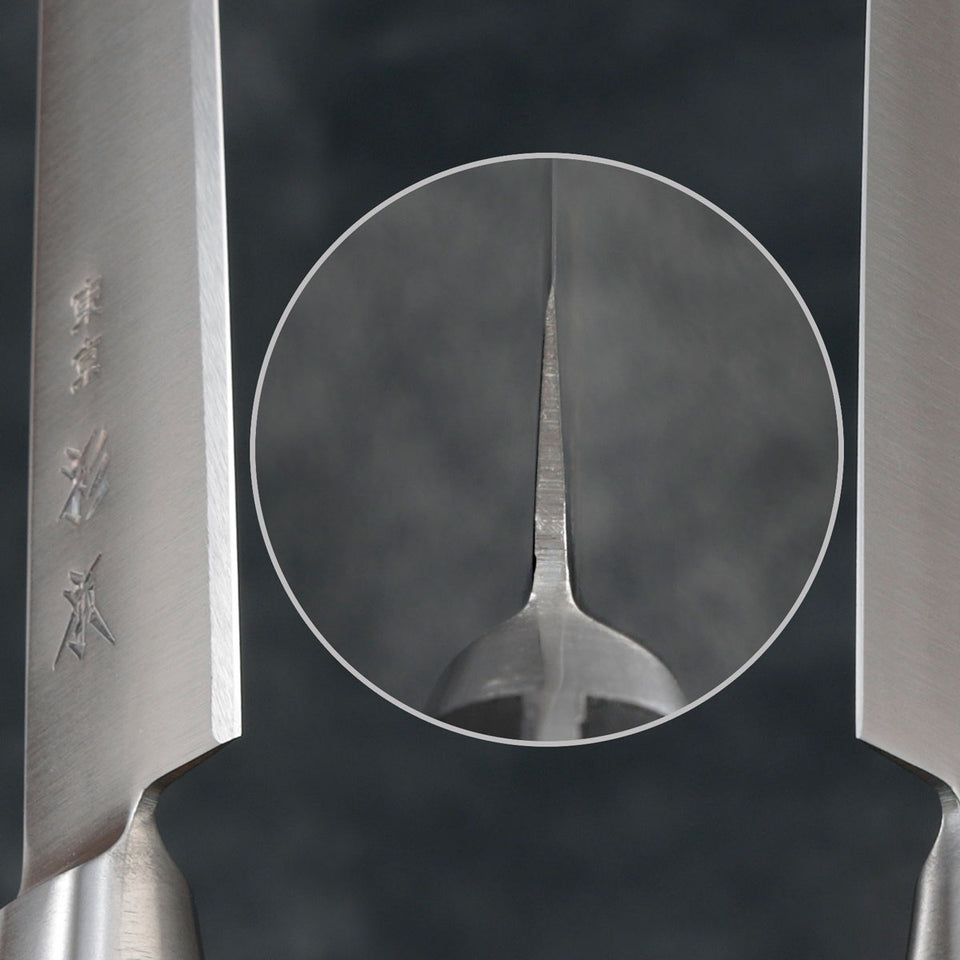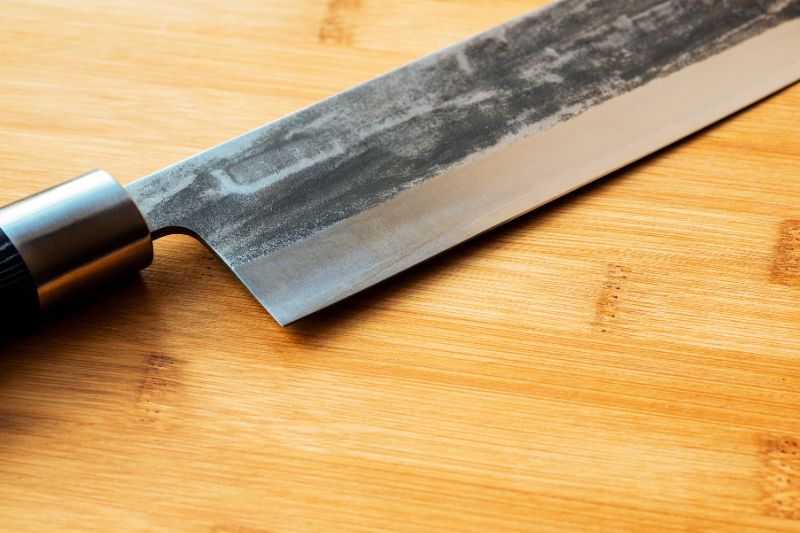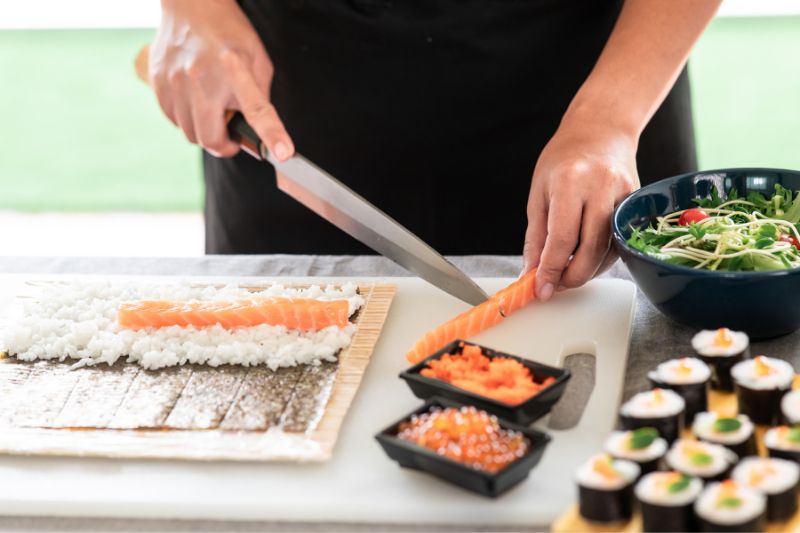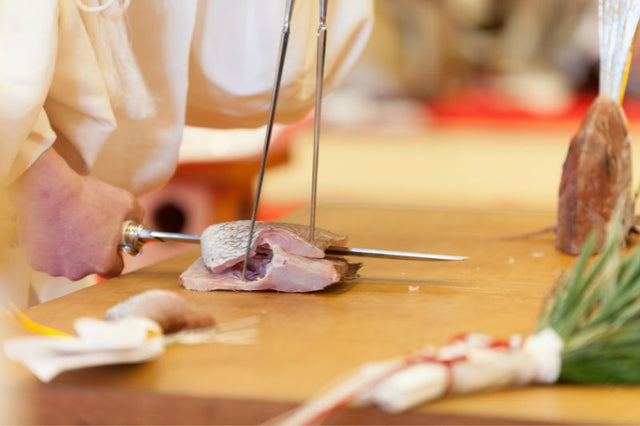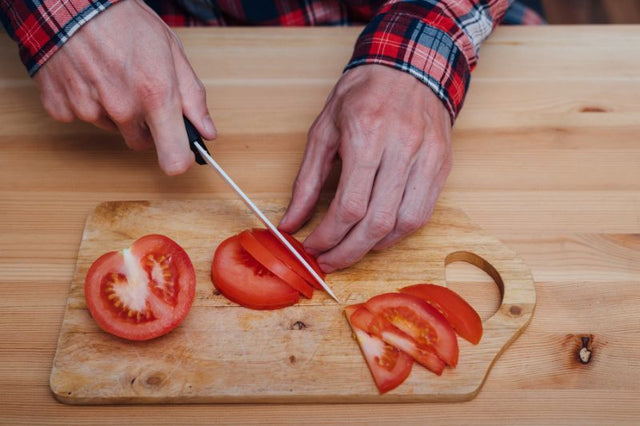
A Japanese Single Bevel knife and a Chinese Vegetable Cleaver (Cai Dao) are popular single bevel knives for slicing vegetables and other meat. Although these knives have some critical differences in design, purpose, and usage. Let’s see if one is better than the other on each ranging criterion:
1. Beautiful Blade Design
Japanese Knives only have a blade ground on one side, typically at an acute angle, resulting in a sharp edge on one side and a flat side on the other. The angle of the bevel can vary depending on the specific knife and its intended use.
The Cai Dao also has a single bevel blade but is generally wider and rectangular, unlike the more curved shape of a typical Western chef's knife. It often features a slight curve towards the tip, allowing for a rocking motion during cutting.
It’s a tie! As Beauty is subjective, and there are many designs etched on the blade.

2. Sharpness
The Japanese single bevel knife and the Cai Dao Chinese vegetable cleaver can achieve exceptional sharpness. However, determining which is sharper depends on various factors such as the specific brand, craftsmanship, and sharpening technique.
In general, Japanese single bevel knives are renowned for their exceptional sharpness. The blade geometry and the craftsmanship of Japanese knives often result in excellent and precise edges. The high-quality steel used in Japanese knives allows for excellent edge retention and the potential for achieving an extremely sharp edge.
On the other hand, Cai Dao cleavers can also be sharpened to a very high level. While they may not reach the same level of precision and sharpness as Japanese single bevel knives, they can still achieve an impressive level of sharpness, especially considering their primary purpose of vegetable preparation.
Ultimately, the sharpness of a knife depends on factors such as the skill of the sharpener, the quality of the steel, and the specific sharpening techniques employed. Japanese single bevel knives and Cai Dao cleavers have the potential to be exceptionally sharp, but the Japanese knives often have a reputation for achieving an unparalleled level of sharpness.
3. Cutting technique
Japanese knives are commonly used in Japanese cuisine and require a specific cutting technique. They are typically used for precise and delicate tasks like slicing raw fish or vegetables with precision. The single bevel allows for exact and clean cuts.
The Cai Dao is primarily used in Chinese cuisine and is specifically designed for vegetable preparation. Its wide blade and weight help with the efficient chopping, slicing, and dicing of vegetables. The flat side of the blade can be used to whack (by the heel of the hand) to crush the ingredients like garlic or ginger.
Japanese Knives are leading this cutting round! These are better for precise, specialized, and controlled cutting.

4. Versatility
Japanese knives excel at their specific tasks but may be less versatile for general kitchen use. They are highly specialized tools typically used by professional chefs or individuals with specific culinary skills.
The Cai Dao is a versatile and wider knife that can handle various tasks in Chinese cooking, including vegetable preparation, mincing, and even slicing through bones. Its design allows for efficient chopping and dicing, making it suitable for various ingredients.
Cai Dao is a versatile knife and suitable for multi-tasking; therefore, it beats the Japanese Single Bevel Knives! No need for specialty knives.
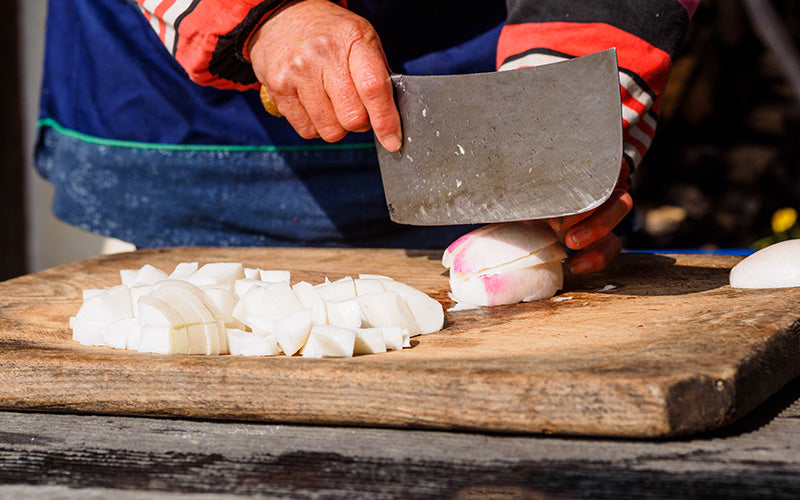
5. Strength
Cai Dao is typically heavier than Japanese single bevel knives. The weight and design of the cleaver enhance its chopping power and allow for more forceful cuts, making it suitable for tasks such as cutting through tough vegetables or even bones.
Cai Dao was often designed to handle more demanding tasks, including chopping, slicing, and even light butchery. They are specifically engineered for efficient vegetable preparation and can withstand heavier use in the kitchen.
While Japanese single bevel knives are known for their precision and delicate slicing capabilities, their thinner blades make them more susceptible to damage if used for tasks that require significant force or impact.
It's important to note that if used correctly and within their intended purposes, both knives can be highly durable and long-lasting. However, suppose you're looking for a knife that can handle heavy-duty tasks and withstand more forceful chopping. In that case, the Cai Dao Chinese vegetable cleaver is generally considered the stronger option.
And the winner is…..
It's a draw. Japanese Single Bevel Knives win on factors of Sharpness and Cutting Technique. Cai Dao, or Chinese vegetable cleaver, wins on aspects of Versatility and Strength. The choice between them depends on the culinary traditions and specific tasks you must accomplish.

Get Free Bonus Books
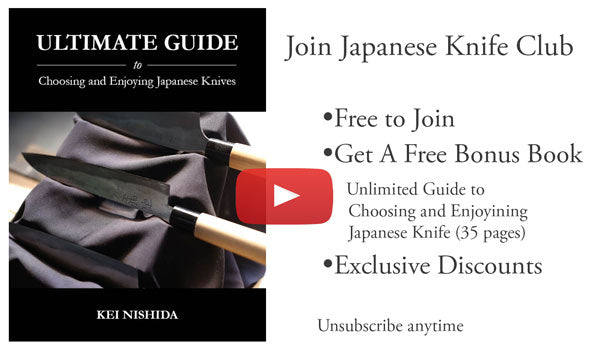
Sign up for free to the Japanese Knife Club to get advice and exclusive articles about how to choose Japanese Knives, and tips and tricks for using Japanese knives.
About the author
Kei Nishida
Author, CEO Dream of Japan
Certification: PMP, BS in Computer Science
Education: Western Washington University
Kei Nishida is a passionate advocate of Japanese craftsmanship, a writer, and the founder and CEO of Japanese Knife Co., Japanese Green Tea Co., and Japanese Coffee Co., all part of Dream of Japan.
His journey began with a mission to introduce the world to the exquisite flavors of Japanese green tea. Through Japanese Green Tea Co., he pioneered the import of premium tea grown in nutrient-rich sugarcane soil, earning multiple Global Tea Champion awards. He then expanded into the world of coffee, launching Japanese Coffee Co., the first company to bring Sumiyaki charcoal-roasted coffee to a global audience.
With a deep appreciation for Japanese artistry and tradition, Kei turned his attention to one of Japan’s most revered crafts: bladesmithing. Through Japanese Knife Co., he made handcrafted katana-style knives, created by a renowned katana maker, available outside Japan for the first time. These exceptional knives embody centuries of samurai sword-making expertise, blending tradition with modern functionality for chefs and collectors alike.
Kei’s journey continues as he uncovers and shares Japan’s hidden treasures—one sip, one blade, and one legacy at a time.


